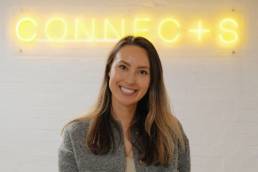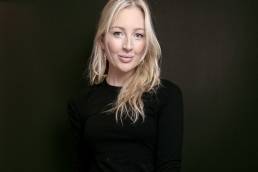Based in the UK, Sarah Furness draws on her lived experience as a former RAF helicopter pilot and squadron leader to help others perform under pressure. Her leadership journey began in the Royal Air Force and continues today through her powerful mental fitness coaching and speaking engagements.
Now a renowned expert in resilience and high-performance leadership, Sarah is one of the most sought-after mental health speakers. She combines military precision with neuroscience-backed strategies, helping global organisations reframe stress, boost performance, and lead with clarity and calm.
In this exclusive interview with The Champions Speakers Agency, Sarah unpacks her unique approach to leadership, reflects on motherhood in the military, and shares actionable strategies for building team engagement and modelling wellbeing.
How has your approach to leadership evolved over time, from early experiences to your current philosophy?
Transformation, so yeah, interesting question. I think my leadership style started with probably a dictatorship, where I worked out that people would do what you ask them to do when you get given a leadership role. And this is very young, you know, when I was 12 or 13 and I was in the air cadets and, you know, I sort of had my train set to play with.
And then you obviously work out that that’s not really what leadership is. But I think you sort of have to—I’d certainly had to—work that out by practising it and getting it wrong and realising that people don’t really respond to that. So I think now it’s gone much more into influence and much more stepping back and creating the conditions.
You know, I think to start with you feel like you have to have all the answers and be very directive, and I think there’s a time and a place for that. But also, as I’ve sort of matured and learned more about it, I’ve learned that actually sometimes it’s just about creating the space for people to find their own answers and having the confidence that that’s also leadership.
What practical strategies can leaders implement to model and encourage wellbeing in high-pressure environments?
So I think one of my superpowers, I think, is unasking—or one of the things I think is a leadership superpower is unasking—which is what it sounds like. It’s the opposite of multitasking. And I think that’s so important in today’s world where we’re on all the time.
We are able to be contacted through a variety of different, you know, sort of media sources. So it’s very easy to think that we have to be everywhere at once. But actually, the brain still can’t be in more than one place at once. Our conscious thinking brain can only really focus on one thing at a time.
And I think I sort of discovered this—it’s a very long, convoluted story, which I give a whole speech about—but ultimately I discovered that when you focus on one thing at a time, not only do you do that task quicker, but you reduce overwhelm and you take back a bit of agency in your life. So it feels good.
So actually, I think giving yourself permission to focus on one thing at a time is a really, really good strategy for wellbeing. And I think one of the best ways for leaders to encourage that is to do it themselves and to signpost that and say, “Actually, I can’t multitask, I’m better at focusing on one thing at a time, so I need to focus on this right now.
And actually sort of creating those boundaries but also socialising the ideas so that other people think, “Maybe I could do that too because they seem so calm and I’m running around doing a million things.” Hopefully that’s not true, but I think you’ve got to practise what you preach.
In periods of significant organisational change, how can leaders sustain team engagement while driving transformation?
So that’s a great question and a lot of organisations ask about this. You know, how do we lead through transformation? How do we lead through change? I think there’s a couple of really important things to think about here.
Number one is, you know, if you—let’s just say your partner or someone that you deeply respect, you know, put a cup of tea in your hand and they said, “We need to talk, something’s got to change,” what would your immediate go-to thought be?
Because I know what I’d be thinking. I’d be thinking, “Oh my goodness, what have I done wrong?” So I think it’s important to recognise that when we’re leading through change, that’s where people’s brains go.
They either think, “I must have done something wrong,” or, “I’m being set up to fail.” In the past—so actually I think a lot of it is about teaching people to have a different mindset about failure because it’s part of the journey. I think that’s one part.
I think the other part is when change is done to—you know, we don’t really like being told what to do. And I did 21 years in the military where you literally tell people what to do and I can tell you that they still don’t like it. So I think the key is creating a sense of agency.
So where you can, giving people the ability to collaborate, to co-create a transformation plan. And if they can’t do that, then the ability to challenge it. And if they can’t do that, then at the very least explaining why they are an integral part of the plan and articulating what their contribution is.
So I put that down to three C’s, which is collaboration, challenge and contribution. Those are the ways I think that can really help to increase people’s engagement when they go through transformation.
What personal experiences shaped your confidence and ability to lead under pressure?
So I attribute a lot of this down to my upbringing, my childhood. It did all start with the movie Top Gun, I’m not ashamed to say. When I watched the film and I thought, “That is what I’m going to do,” and as you are when you’re 12, you don’t question it.
But neither did anybody else, actually. You know, my parents, my teachers, they said, “Absolutely, we can kind of see you being a fighter pilot.” So I went off and joined the air cadets and that gives you an early exposure to leadership.
And then I was, you know, prefect at school. So I think part of it was just that nobody put the idea in my head that I couldn’t. And actually, when you’re all sort of that kind of age, we don’t have those limiting beliefs that we all learn to have when we get older.
So I think that helped. And also just getting out there and doing it. Inevitably, you have to test and adjust, you get some things wrong, but the more you do it, the less frightening something is. So I think early exposure and then just keeping learning—I think that really helped, yes.
This exclusive interview with Sarah Furness was conducted by Sophia Hayes of The Motivational Speakers Agency.




